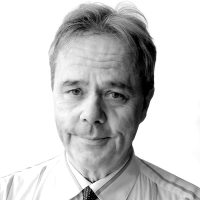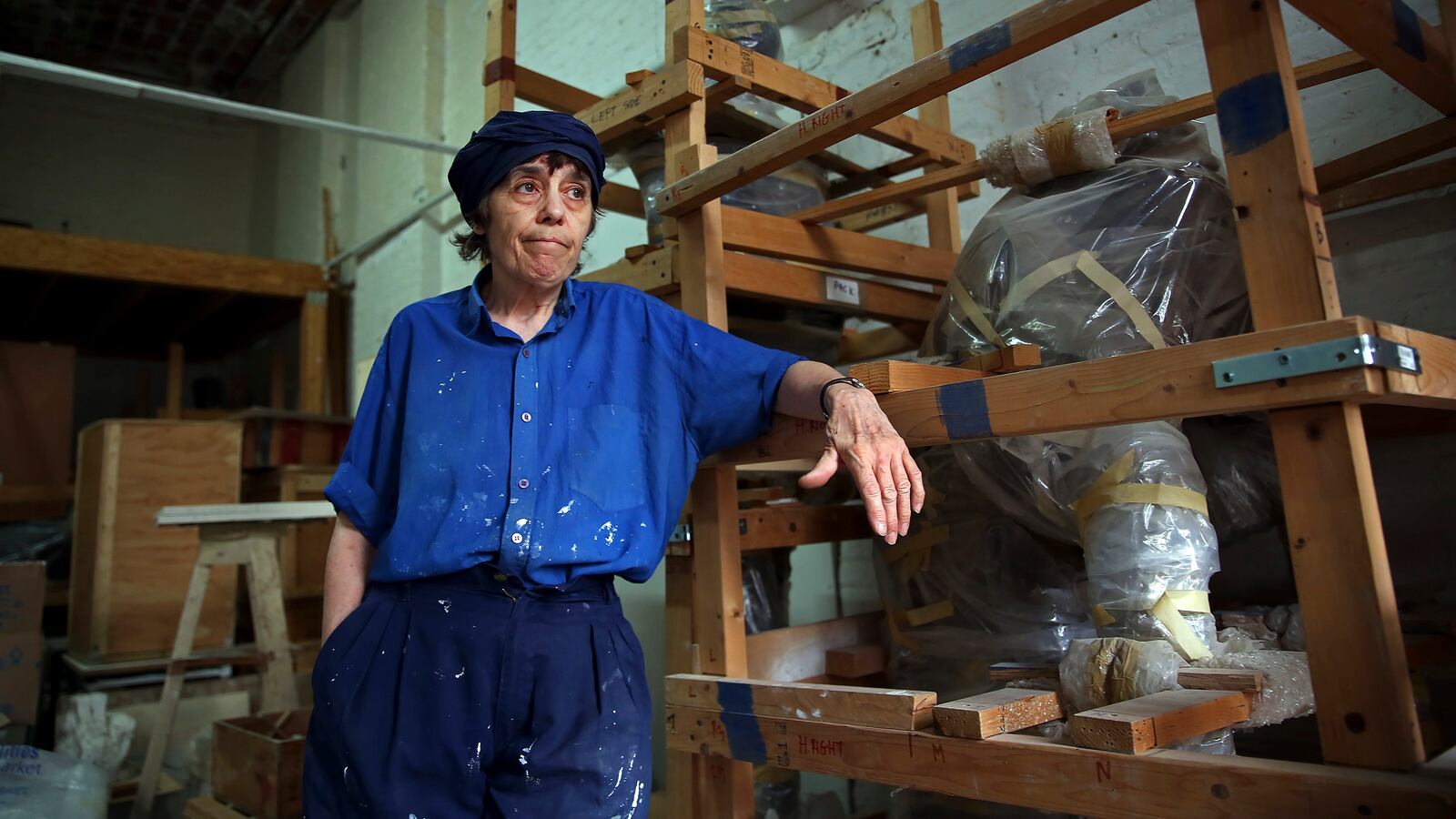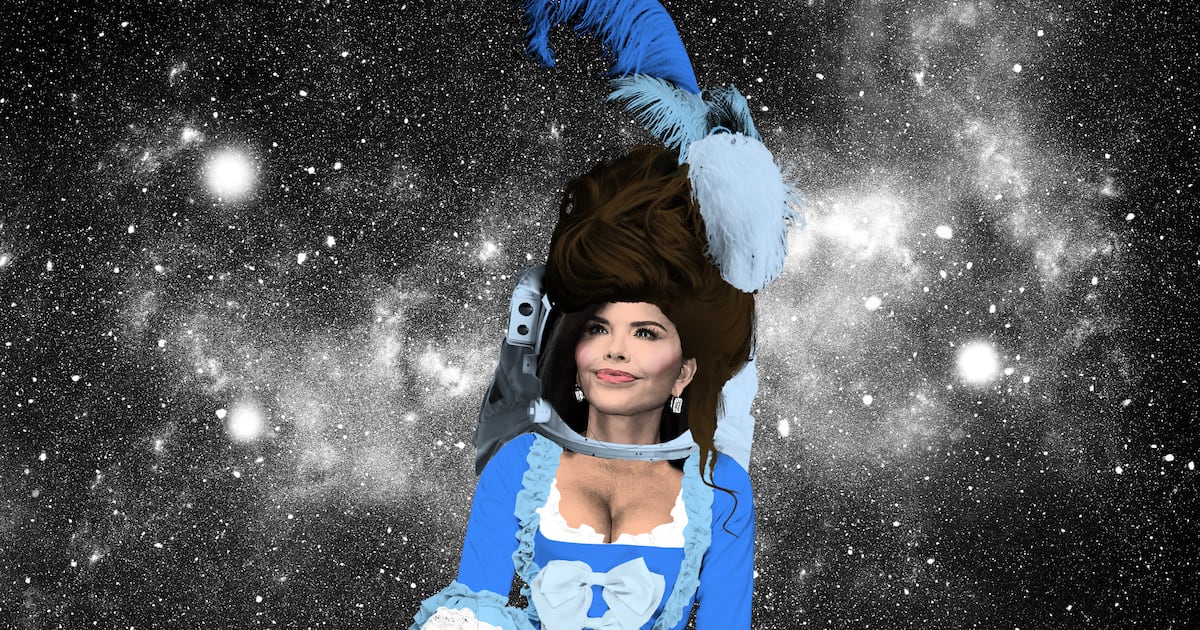As the debate over removing Confederate statues continues, one of America’s most talented figurative sculptors has been composing a list of worthy substitutes.
Her name is Gabriel Koren and she proposes to replace the likes of Stonewall Jackson and Robert E. Lee and Jefferson Davis with African-American heroes such as W.E.B. Dubois and Fannie Lou Hammer and James Baldwin.
“I’m very happy they are coming down,” the 69-year-old artist said of the Confederate figures last week. “And I am going to make sculptures that are going up!”
For every hero of the Confederacy, Koren can name any number of heroic figures from her continuing studies of African-American history since she emigrated to New York from Hungary nearly four decades ago.
“My life is not long enough to do all of them,” she said.
Her statue of Frederick Douglass and her Malcolm X statue are on public display in Upper Manhattan. The Douglass work was installed in 2010 at the foot of the boulevard that bears his name. It stands two blocks across town from an ice skating facility officially called Lakser Rink, but billed as Trump-Lasker Rink on its website, as it is managed by the organization that bears our president’s name.
President Trump has said of the movement to remove Confederate statues, “They’re trying to take away our culture, they’re trying to take away our history.” But he seems to have paid no conscious note of the statue in his hometown of Douglas standing in 19th-century attire.
Trump might otherwise have proven the positive value of such public art by learning that this former slave who became a prominent abolitionist and champion of the human spirit is not currently among the living, as our president seemed to believe in February, when he spoke of Douglass on the first day of Black History Month.
“Frederick Douglass is an example of somebody who’s done an amazing job and is getting recognized more and more, I notice,” Trump actually said.
Trump is clearly in need of the history and culture that art such as Koren’s statue of Douglass can impart. Koren hopes other worthy figures from the cause of unity and freedom will give all of us a boost of history and culture if statues of them now take the place of statues depicting unworthy figures associated with succession and slavery. Koren can remember learning of the great figures of her native Hungary while growing up in Budapest.
“There are many sculptures of Hungarian thinkers, writers and historical figures in the parks and on the streets,” she says in the artist statement posted online. “As a child I grew up playing with the sculptures, climbing on them, while constantly asking my grandmother who these people were.”
She would have a primary goal as she went on to train as an artist.
“I wanted to learn to build a human figure,” she would recall to The Daily Beast.
Her father was a musician who traveled widely and returned from one trip with a copy of National Geographic that contained numerous photos taken of people in Africa.
“Just the most gorgeous people you can imagine,” she remembered.
She saw more images of Africans in newsreels that reported on colonies finally securing their independence during the 1960’s. She expected that people of African descent would be among the people she met after she received a master’s degree from the Hungarian Academy of Fine Arts and headed for New York.
“I thought if I came to New York City, so many different people, so many different cultures, I thought I am going to have lot of friends in these different groups,” she remembered.
She was surprised by the racial divide even in the great mix of backgrounds in the world’s art capital.

“After three years, I have only white friends,” she recalled. "All the people I know, everybody is white.”
She did meet a good many openly gay people, then a rarity in her homeland behind the Iron Curtain.
“It was new to me,” she remembered. “I love everything new. The more different, the more I love it.”
She decided upon a subject for her first major piece in America.
“I saw so many gay guys; I love them,” she recalled. “I said, ‘Okay, this gives me reason to make two men.’”
He set about sculpting a three-dimensional version of Manet's Olympia, the painter’s singular masterwork from a time Paris was the epicenter of art.
“Exactly as the painting,” Koren said of her version. “It’s almost a copy.”
Only, she substituted Manet’s nude white woman and attending servant of color with two Caucasian men.
“It doesn’t matter if they are gay,” Koren told The Daily Beast. “It’s about love.”
She remained determined to build bridges across the racial divide. An African-American boyfriend introduced her to WLIB radio and she heard an announcement of a meeting to be held by black activist Reverend Herbert Daughtry at the House of the Lord church in Brooklyn.
“They said on the radio everybody should go,” she remembered. “I said, ‘I’m everybody.’”
She arrived at the gathering to discover that she was the only white person in attendance. Those present were urged also to attend an ongoing series of lectures on black history.
“So I started going to history lectures,” she recalled. “At first, people were kind of surprised I was there. Nobody was friendly, but they weren’t unfriendly, either. They have this big question on their faces, ‘Why is she here?’ But little by little they got used to me.”
She continued attending black history lectures all over the city, every day except Sunday.
“I caught fire,” she recalled. “I said ‘What a story! What an incredible story!’”
She was not satisfied with just the broad outlines any more than she would be with just a rough sketch of a statue.
“I knew the basic facts," she later said. “I wanted to know more. I wanted to know the details.”
She would buy the tapes that were often on sale at the talks.
“I bought the tapes and I went home and l listened to them many, many times,” she said.
She knew that this was the story she wanted to tell with her work.
“I found my subject,” she remembered.
She began with two black versions of the classic Apollo of Ancient Greece. One had images of from black history on his skin and wore headphones (“to listen to the universe.”) The other looked to have been shattered by the forces of that history and then reassembled. A perfect review came from an African-American friend.
“He said, ‘That’s who we were, that’s how we are,’” she recalled.
She entered and won a competition for a commission to sculpt a statue of Frederick Douglass. She spent eight years on the project, often sleeping in her studio and getting to work as soon as she rose.
“I love everything about sculpture,” she later said. “There is nothing that I don’t love. Life size, that’s what I love to do.”
She also camped at the foundry, where the life-sized plaster cast was enlarged to the eight-foot bronze version that the city officials wanted.
“I slept there for six months, working on the details,” she reported.
She made sure everything was just right, matching the details she had learned of history with the details she had mastered as an artist; the hair, the buttons on the coat, even the veins in the hands.
“I know what I want, why I want it, how I want it,” she noted.
The finished bronze statue was exactly what she wanted.
“I love it,” she later said. “I love it! I love it!”

The one problem was that the city had decided to place the statue facing north. He had escaped slavery and found freedom by heading north. The abolitionist newspaper he founded was named The North Star. Harlem extended north from where the statue stood.
But for a classically trained Hungarian sculptor, north is the direction that gets the least sunlight, as proven by the greater of abundance of moss on the north sides of trees in the northern hemisphere.
“Everybody wanted the sculpture to face north,” she later said. “I totally agreed with that but you can't turn my sculpture to the north. Mother Nature is not cooperating.”
The city of course prevailed. Koren settled for seeing and photographing the statue in its full glory briefly in the morning during the summer, when the sun shines full on Douglass' face.
In the meantime, Koren had won another commission, this for a statue at the Connecticut statehouse of Prudence Crandall, a white teacher who opened a private school in that state's town of Canterbury Connecticut in 1831 and admitted a 17 year-old African-American student, making it the first integrated classroom in the country. Whites immediately boycotted the school, which was gutted by an arson fire.
Crandall then opened a school for “young ladies and misses of color,” attended by 20 students from as far away as Boston and New York. The Connecticut legislature promptly passed the “Black Law,” which made it a crime to educate African-American students from out of state. Crandall and one of her students were arrested. The school’s well was poisoned with dung and she was denied access to other sources.
“We are not merely opposed to the establishment of that school in Canterbury; we mean there shall not be such a school set up anywhere in our State,” declared Andrew Judson, a U.S. congressman from Connecticut and a future federal judge. “The colored people can never rise from their menial condition in our country; they ought not to be permitted to rise here. They are an inferior race of beings, and never call or ought to be recognized as the equals of the white.”
Koren’s commission called for just the figure of Crandall, but the sculptor decided that history would be better served by adding the figure of one of the students. That doubled the cost of the bronze casting to $50,000, which came out of her $100,000 commission, leaving her with just over $6,000 for each of the eight years she spent on the piece. She did not have to pay for the Douglass casting, but her commission was only $75,000 for seven years labor.
Since her arrival in New York, Koren had supported herself with what she calls “Mickey Mouse” work, making mannequins and scenic pieces for plays and films. The mannequins were remarkable, but with globalization the market was flooded by much cheaper figures made in China and India. The stage and movie set work also dwindled.
Koren also taught at City College and the National Academy of Design, but life-size figurative sculpture requires bigger spaces than are generally available and more rigorous training than most American students are prepared to undergo.
“You have to study many, many years,” she told The Daily Beast. “People are not persistent.”
Without a teaching position and with scant Mickey Mouse work, Koren earned just $1,600 in 2015 and $1,821 in 2016. She has fallen on such hard times in 2017 that she lost her studio in July. Her pieces, including the two Black Apollos and a remarkable statue of Marcus Garvey, have had to go into storage.
“I do not have a studio right now,” Koren told The Daily Beast. “I need a job, a sculpture job to be able to rent a sculpture studio. I cannot work and earn a living without a sculpture studio or a temporary work space.”
She added, “I am looking for a sculpture commission and/or a commercial sculpture job ASAP to pay my rent at home. I do not have any income and in a month I will not be able to pay for my food and minimum living expenses.”
She is becoming quite literally a starving artist and she has trouble sleeping.
“I’m full of worries," she said, noting, “It’s a very bad combination, not eating well, not sleeping well.”
She currently lives in a room so small that she can touch the opposite walls by extending her arms on either side of her.
“But it has a window; this is very good,” she said, her artist spirit undimmed. “I wake up and see the sun.”
And however briefly in the morning, that same sun shines full on the face of her magnificent statue of Frederick Douglass, which could teach a thing or two to the guy whose company manages Trump-Lasker Rink three blocks down Central Park North.
Koren remains ready to make statues of more heroes from African-American history and she plans to send a list to the governor of every state offering righteous replacements for Confederate statues that come down.
However it goes, she is determined to keep telling with her statues the incredible story that needs to be fully told, not just for the sake of African-Americans of generations past, present and future, but for all Americans if we want America to be truly great.
“I’m not going to stop doing sculptures because nobody buys it,” she said. “James Baldwin, I want to do James Baldwin…W.E.B Dubois, he is very important. He was the most important historian. He just has to be done.’’
Anybody who wants to become a patron of her effort need only do so.




